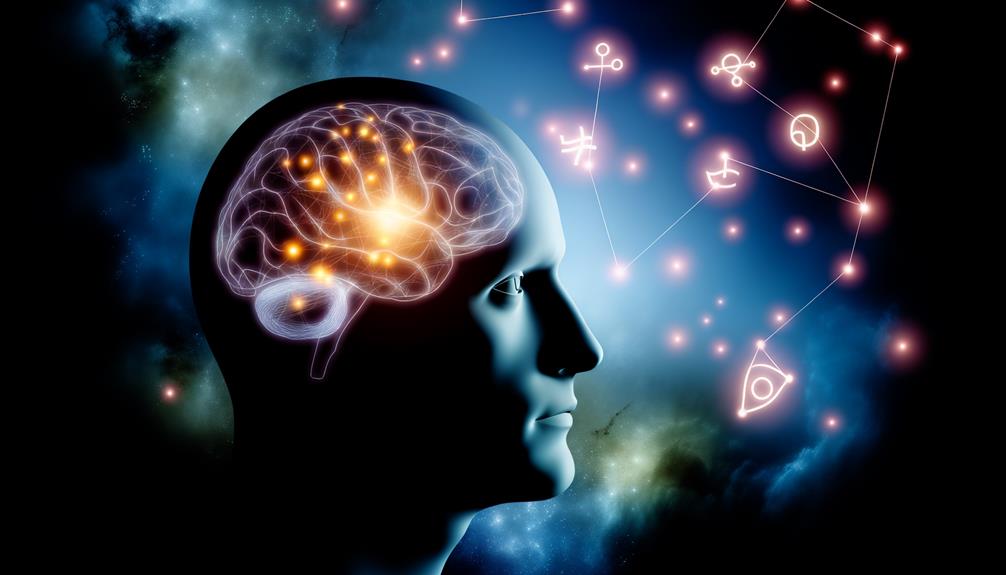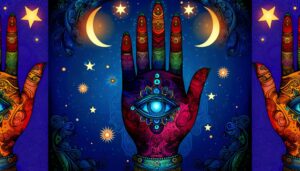Decoding Symbols – Guide to Understanding Their Meaning
A symbol is an abstract representation designed to convey complex ideas beyond the scope of language. It serves as a powerful tool for communication, enhancing cognitive processing and memory retention.
Historically, symbols played a foundational role in early human communication, governance, and trade. In various cultures, they shape collective identities and embody communal values, historical narratives, and religious principles.
Psychologically, symbols operate on a subconscious level, tapping into universal archetypes and facilitating decision-making. Common symbols like the heart, dove, and cross succinctly convey profound concepts.
To further explore the depths of symbolism, consider its portrayal in art and literature.

Key Takeaways
- Symbols represent abstract ideas and transcend linguistic barriers.
- They enhance cognitive processing and memory retention by condensing complex concepts.
- Symbols evoke emotional responses and connect to deeply ingrained archetypes.
- They facilitate intergenerational communication and convey communal values.
- Symbols are integral to cultural identity, historical narratives, and societal cohesion.
Definition of Symbols

Symbols, as abstract representations, serve to convey complex ideas, values, or concepts through simplified forms that transcend linguistic barriers. They function as powerful tools for communication, encapsulating multifaceted meanings within easily recognizable shapes, colors, or images.
Symbols facilitate the conveyance of cultural, religious, or social values, enabling shared understanding among diverse groups. Essentially, a symbol distills an extensive array of information into a singular, potent image, thereby enhancing cognitive processing and memory retention.
The effectiveness of a symbol lies in its ability to evoke emotional responses and intellectual connections simultaneously. By examining the underlying structure and function of symbols, one can appreciate their role in shaping human thought and cultural evolution, highlighting their indispensability in both historical and contemporary contexts.
Historical Origins

Tracing the historical origins of symbols reveals their foundational role in the earliest forms of human communication and cultural expression. From primitive cave paintings to ancient hieroglyphics, symbols have been instrumental in conveying complex ideas and shared meanings across generations.
Archaeological findings suggest that early humans utilized symbols to depict essential aspects of their lives, such as hunting practices and spiritual beliefs. These visual representations facilitated not only survival but also the transmission of knowledge and cultural values.
The evolution of symbolic systems, such as written language and religious iconography, underscores their enduring significance. As societies grew more sophisticated, symbols became integral to governance, trade, and social cohesion, illustrating their profound impact on human development.
Cultural Interpretations

The diverse cultural interpretations of symbols reveal their multifaceted roles in shaping collective identities, beliefs, and social dynamics. Symbols often transcend mere representation, becoming vessels for communal values and historical narratives. They serve as conduits for intergenerational communication, encapsulating shared experiences and ideologies.
Religious Symbols: From the cross in Christianity to the crescent in Islam, these symbols embody profound theological principles and cultural heritage.
National Symbols: Flags and emblems encapsulate national pride, unity, and historical milestones.
Language and Scripts: Alphabets and scripts like Cyrillic and Kanji convey not just linguistic meaning but also cultural identity and history.
Art and Iconography: Art movements and styles, such as Renaissance or Surrealism, use symbols that reflect societal values and philosophical ideologies.
Thus, understanding symbols within their cultural contexts enriches our comprehension of their significance.
Psychological Impact

A symbol's potency lies in its ability to evoke profound psychological responses, shaping individual perceptions and emotional states. Symbols operate on a subconscious level, tapping into deeply ingrained archetypes and personal experiences.
For instance, the heart symbol universally represents love, but its impact varies based on personal associations—eliciting joy, nostalgia, or sorrow. This psychological resonance is rooted in the symbol's ability to condense complex emotions and ideas into a singular, recognizable form.
Additionally, symbols facilitate cognitive processing by providing mental shortcuts, thereby influencing decision-making and behavior. The psychological impact of symbols underscores their importance in communication, as they transcend linguistic barriers and directly engage the human psyche, demonstrating their unparalleled efficacy in conveying meaning.
Common Symbols Explained

Understanding the psychological impact of symbols sets the stage for a detailed exploration of some of the most common symbols and their meanings. Symbols communicate powerful messages, transcending cultural and linguistic barriers.
Here are some ubiquitous symbols and their significance:
- Heart: Universally associated with love and compassion, the heart symbolizes emotional and spiritual core.
- Dove: Often representing peace, the dove is a symbol of harmony and the end of conflict.
- Cross: In Christianity, the cross signifies sacrifice and redemption, while also representing faith and spirituality.
- Yin-Yang: This Chinese symbol embodies dualism, illustrating the balance and interdependence of opposite forces.
These symbols exemplify how deeply ingrained imagery can convey complex concepts succinctly and universally.
Modern Usage

In contemporary society, the usage of symbols has evolved to encompass digital communication, branding, and social movements, reflecting the dynamic nature of modern human interaction.
Emojis, for example, have become a universal language in digital communication, conveying emotions and concepts succinctly across cultural boundaries.
In branding, logos serve as powerful symbols of corporate identity, encapsulating a company's ethos and values in a single image.
Social movements leverage symbols, such as hashtags and color schemes, to unify participants and amplify messages, making abstract ideals more tangible and actionable.
This multifaceted application of symbols underscores their ability to adapt and remain relevant, shaping and reflecting the complexities of contemporary human experience.
Through these lenses, symbols continue to be integral in facilitating understanding and connection.
Symbolism in Art and Literature

Building on the pervasive influence of symbols in modern contexts, their profound significance in art and literature reveals a rich tapestry of meaning that extends beyond mere visual representation. Symbolism enables artists and authors to convey complex ideas, emotions, and narratives through seemingly simple elements. This depth of meaning can be seen in various dimensions:
- Cultural Significance: Symbols often encapsulate the cultural heritage and collective memory of societies.
- Emotional Resonance: They evoke specific emotional responses, creating a deeper connection with the audience.
- Narrative Layers: Symbols add layers of meaning to stories, enhancing their richness and interpretive potential.
- Universal Themes: Symbols can transcend individual works, linking them to broader, universal themes that resonate across time and space.
Understanding these aspects enriches our appreciation of artistic and literary works.
Conclusion
Symbols serve as powerful tools for conveying complex ideas, emotions, and cultural values across different contexts. Their historical origins and varied interpretations highlight the richness of human expression.
For instance, the cross, initially a Roman execution device, evolved into a profound symbol of faith and redemption in Christianity. Understanding symbols' psychological impact and their role in art and literature enriches comprehension of human communication, underscoring their enduring significance in both ancient and modern societies.





